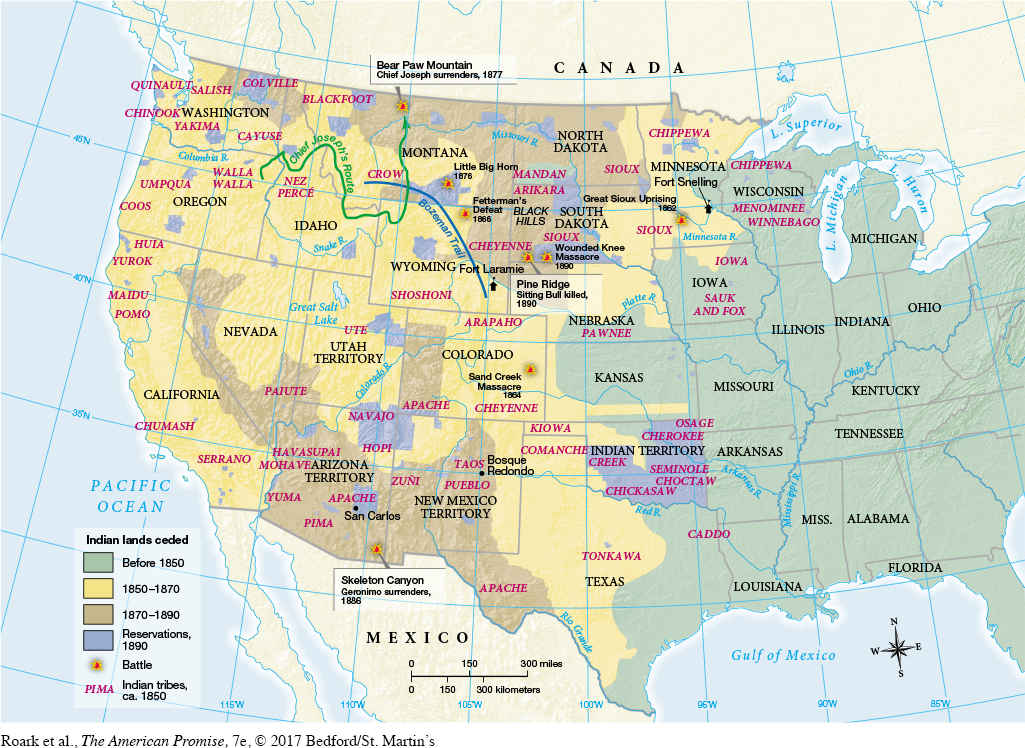The American Promise: Printed Page 471
The American Promise, Value Edition: Printed Page 430
The American Promise: A Concise History: Printed Page 490
Conquest and Empire in the West
While the European powers expanded their authority and wealth through imperialism and colonialism in far-
The U.S. government, through trickery and conquest, pushed tribes off their lands (Map 17.1) and onto designated Indian territories or reservations. The Indian wars depleted the Native American population and handed most Indian land to white settlers. The decimation of the bison herds pushed the Plains Indians onto reservations, where they lived as wards of the state. Thus did the United States, committed to an imperialist, expansionist ideology, colonize the West.
